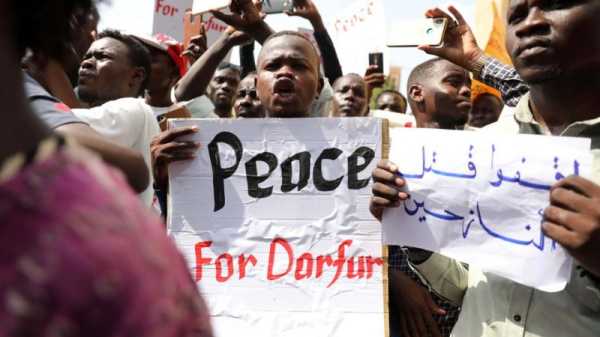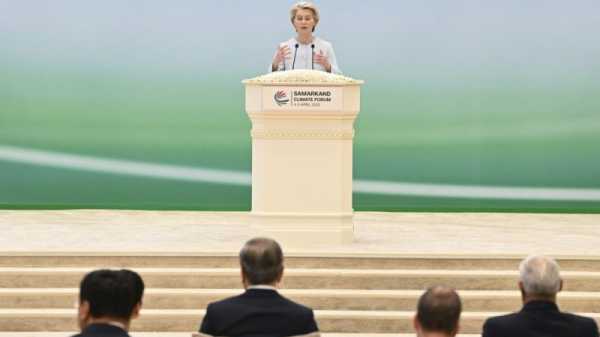
Regional bias is the main driver behind the West’s response to humanitarian atrocities in terms of whether they intervene or simply ignore them, and there are large inconsistencies in humanitarian intervention patterns when comparing Western versus non-Western spheres of influence, argues Sidita Kushi.
Dr Sidita Kushi is an assistant professor of political science at Bridgewater State University and a non-residential fellow within the Center for Strategic Studies at The Fletcher School at Tufts University.
Why does the international community look the other way as humanitarian atrocities rage in Darfur, Myanmar, and Yemen? Meanwhile, Western states, sometimes under UN or NATO authority, undertake humanitarian military interventions in places such as Kosovo (1999) and Libya (2011)?
Differences in the national interest and the power capabilities of the offending target state are one explanation for this gap, but those alone are not enough to solve the puzzle. For instance, the US intervened in Somalia and Kosovo for humanitarian objectives but continues to ignore Darfur, a similarly weaker target with lower levels of interest at stake.
A humanitarian military intervention (HMI) occurs when states or a group of states, including via the UN or other institutions, use military force to protect foreign nationals from intrastate abuses. The humanitarian objective must be clear in the mandate, although this objective often co-exists with other more geopolitical ones, such as preventing a refugee crisis or a failed state.
While calls for humanitarian military intervention continue even after the 1990s, the phenomenon elicits deep scepticism given the inconsistent application of humanitarian norms across cases of crises. Why do humanitarian military interventions occur in response to certain internal violent crises while they are absent in others?
While scholars have suggested national interests, human rights, or broader socio-economic factors as answers, there is another explanation behind the inconsistencies of humanitarian intervention – regional bias.
Applying data of all post-Cold War internal armed conflicts matched to third-party responses, I argue that there are large inconsistencies in humanitarian intervention patterns when comparing Western versus non-Western spheres of influence.
Conflicts near the West receive more attention, but only if perceptions are right
The standard expectation is that countries will intervene in humanitarian crises when it benefits their national interests or when the humanitarian atrocities become severe and activate international legal norms on protecting innocents. But variations in national interest and human rights levels do not differ substantially across sub-samples of intervention versus non-intervention.
I argue that regional institutions, fuelled by perceptions of a distant conflict, drive patterns of humanitarian military intervention. Interventions geographically and culturally closer to the West are most likely and most robust. In fact, a move from a non-Western to a Western region of violence increases the odds of humanitarian intervention by 400 per cent.
This regional support may be activated by favourable perceptions of an ongoing conflict. An internal armed conflict perceived by political elites as an identity-based civil war outside the Western sphere has a low chance of intervention. In contrast, disputes not seen as identity-based civil wars within the Western sphere have the highest probability of intervention.
Why? Theorising on the Regional Bias and Perceptions
The regional variation may serve as a proxy for institutional capabilities and resource sharing, the chances of mission success, and even the impact of state identities on policy choices. The higher likelihood of a humanitarian response near the West may arise due to the West’s highly institutionalised neighbourhood and its value-based alliances that can convert normative ideals of human rights promotion and collective security into national interests.
Conflict perceptions can either mute or activate institutional responses. In the Western sphere of influence, elite perceptions of one-sided conflicts, often labelled as systematic killings or possible genocide, may activate the missions of value-based regional institutions such as NATO, prompting secondary interests related to human rights promotion, but only within the West. This places the option of intervention to prevent human rights atrocities on the table. The ability to assign blame to one party and victimhood to another can simplify policy choices, intervention strategies, and even post-conflict peacebuilding.
On the other hand, if powerful elites understand a distant, violent crisis as just another ethnic or religious civil war, they may see all players in the crisis as equally to blame, thus rejecting a responsibility to protect innocents against systematic abuse.
In the non-Western sphere, however, even perceptions of systematic killings may not be enough to prompt intervention. This is due to the lack of value-based institutions that lower intervention costs and construct interests tied to state identities as human rights promoters.
Why does this matter?
These patterns signal that international norms and institutions still favour Western states and citizens. This regional dimension divides the world into groups of people more likely to receive third-party protection when faced with mass atrocities, creating regional bias in human rights norms, international law, and even the formation of national interest.
Perceptions and regional variations are a double-edged sword. The factors that may have encouraged the Kosovo intervention are the same ones that muted robust international responses to the Darfur crisis. Darfur is far from Western institutional influence, and the fragmented conflict perceptions further limit third-party responses. Regional actors such as the AU and AL have repeatedly dismissed narratives of genocide or systematic killings in Darfur, preferring to frame the Government of Sudan (GoS) as an equally culpable actor in a civil war. Western actors have sometimes labelled the violence in Darfur as ongoing genocide, but without the activation of their regional institutions, Western labels of genocide enter the realm of UN Security Council stalemates.
NATO and other Western institutions have regionalised the global responsibility to protect. Despite the Responsibility to Protect (R2P) principle now enshrined in the UN Charter, during times of humanitarian crisis, the rights and security of specific populations receive more protection than others. This bias is evident as the Western world rallies to send arms and financial aid to a deserving Ukraine fighting against Russia’s war of aggression, all the while they remain silent, sometimes even complicit, on the many humanitarian crises in non-Western parts, such as Yemen.
Humanitarian interventions may look starkly different in objectives, outcomes, and likelihood depending on where the peacekeepers or warplanes go. A vital question remains – how can we preserve beneficial regional norms and institutions of human rights while eradicating the inequalities and exploitations that they may propagate?
Source: euractiv.com



